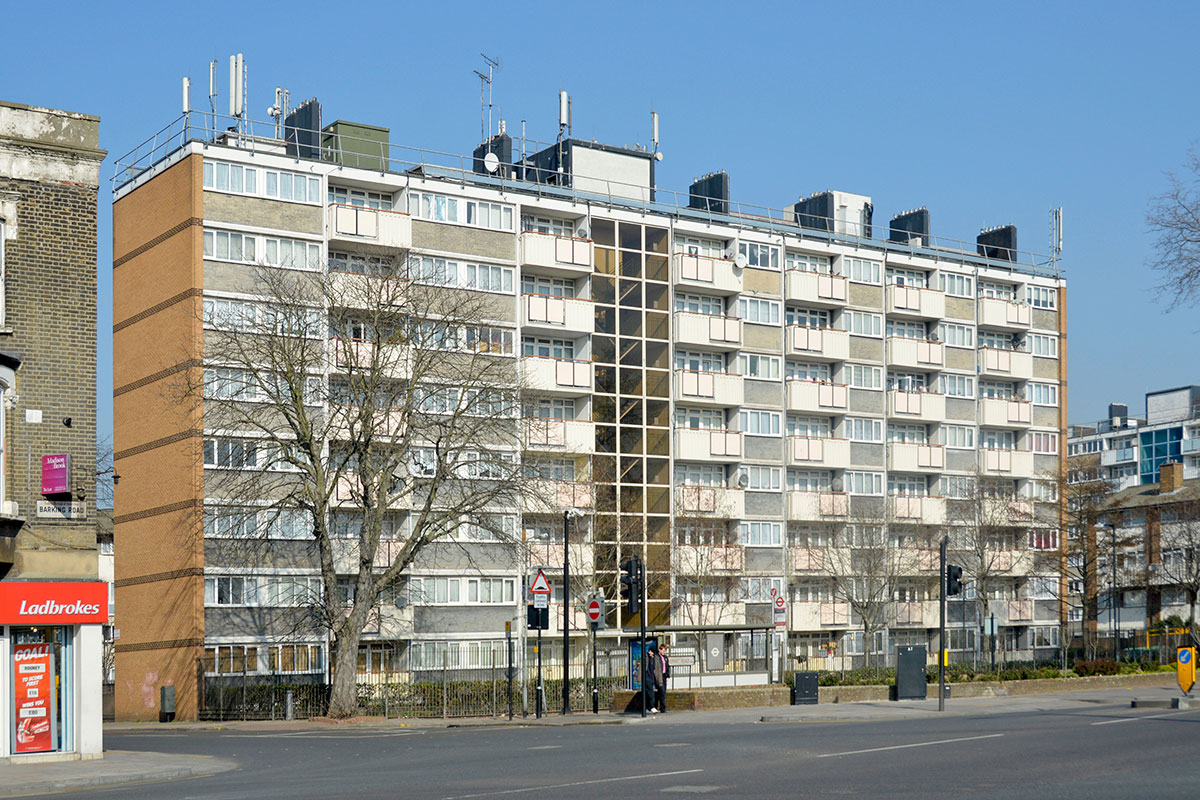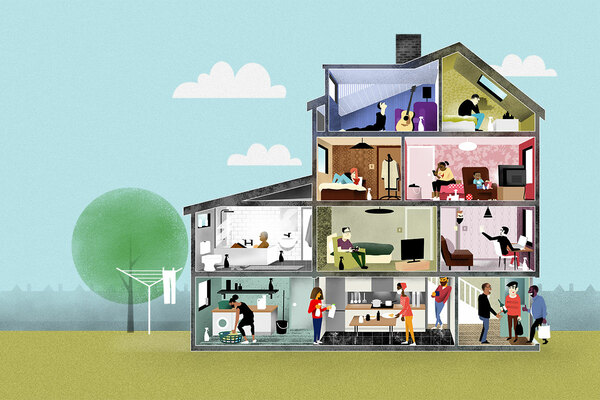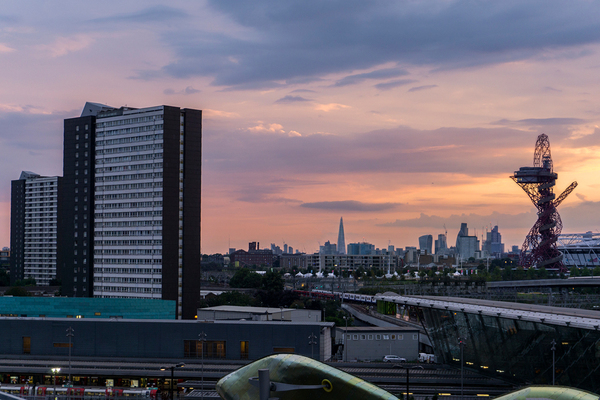The housing pandemic: four graphs showing the link between COVID-19 deaths and the housing crisis
Is poor housing a factor in the COVID-19 pandemic? Nathaniel Barker crunches the numbers to find out. Picture by Alamy
It has been widely recognised for years that housing is a public health issue.
Live in poor-quality, cramped, unsuitable accommodation and you are more likely to suffer from a wide range of illnesses, such as cancer and respiratory and cardiovascular diseases.
In 2015, the Building Research Establishment estimated that poor housing costs the NHS at least £1.4bn a year. Yet, despite the growing body of evidence, the disconnect between housing policy and health policy remains steadfast.
Now, the coronavirus pandemic – described by prime minister Boris Johnson as “the worst public health crisis for a generation” – has thrown the problems into sharp relief. With more than 37,000 people having lost their lives to COVID-19, the UK has the highest number of deaths in Europe and second-most globally.
While a myriad of factors have contributed to the high number of deaths, housing conditions are likely to have played a key part. At the start of the month, the Office for National Statistics (ONS) released shocking figures showing that poorer areas of the country have significantly higher coronavirus mortality rates.
Through exclusive analysis, Inside Housing has delved into the issue further to highlight how the housing crisis may be a major driving factor in this worrying trend.
The contagiousness of the disease has been one of the most worrying characteristics of COVID-19. If people are close together for long periods of time, the risk of spreading or catching the disease increases drastically. Overcrowded living conditions are therefore the perfect environment for the virus to spread.
Graph one shows the age-related COVID-19 mortality rates in each council area across England and Wales plotted against levels of housing overcrowding. Mortality rates (deaths involving coronavirus per 100,000 people) are taken from the ONS’ data and capture the period between 1 March and 17 April.
Overcrowding data is based on 2014 analysis by the ONS on data gathered through the 2011 census. Obviously, the figures are likely to have changed in the past nine years, although these remain the most up-to-date authoritative statistics on overcrowding at a local level.
An overcrowded home is defined as one with one or more fewer bedrooms than required by the household according to the government’s bedroom standard. Here, levels of overcrowded homes are presented as a percentage of all homes in the area.
As graph one (above) shows, the correlation is stark. It strongly indicates that areas with more overcrowded housing have been worst hit by coronavirus.
Out in the top right corner – with the highest COVID-19 death rate (144.3 deaths per 100,00) and the biggest housing overcrowding problem (25.2% of homes are overcrowded) – is Newham in east London.
John Gray, lead member for housing services at Newham Council, thinks that is no coincidence. “This is a housing disease,” he tells Inside Housing.
The council is currently working on a combined health and housing strategy in response to crisis’ terrible impact on the borough.
“There are plausible reasons why overcrowding could contribute to the transmission of the virus,” says Adam Tinson, a senior analyst at The Health Foundation. “It makes it quite hard to self-isolate if you do have symptoms. People on low incomes are also more likely to be overcrowded with a person over 75 or with an underlying health condition.”
There is a distinct London focus to the overcrowding problem. Of the 30 areas with the highest percentages of households living in overcrowded conditions, 26 are in London. Part of that can likely be explained by the acute affordable housing shortages in the city.
Incidentally, then-London mayor Mr Johnson introduced a target in 2010 to halve severe overcrowding in social rented housing by 2016. Despite some initial progress, overcrowding in London only fell from 16.7% in 2010/11 to 13.8% by 2016/17. The problem has worsened since.
The ONS has also confirmed that people from BME backgrounds are hugely over-represented among victims of coronavirus. Overcrowded housing conditions may be partly behind this worrying trend.
According to the English Housing Survey, while around 2% of white British households experience overcrowding, 30% of Bangladeshi households are affected – as well as 16% of Pakistani households and 15% of black African households.
Many overcrowded households will likely be living in houses in multiple occupation (HMOs) – homes that are rented to five or more people not from the same family with shared bathroom and kitchen facilities.
The chart above shows COVID-19 mortality rates in England plotted against councils’ estimates of how many HMOs are in their area according to the 2018/19 Local Authority Housing Statistics (LAHS) published by the Ministry of Housing, Communities and Local Government (MHCLG).
Inside Housing has presented the figure as the rate of HMOs per 100,000 dwellings in the area, per MHCLG statistics.
HMOs, usually run by private landlords, are often the cheapest way of renting and so are common in places with housing affordability issues. They are also sometimes associated with cramped and sub-standard conditions. The scatter is wider, although the graph indicates a link between HMO prevalence and COVID-19 death rates across local authorities.
The chart above shows the same COVID-19 mortality rates data used in the two previous graphs, broken down by proportions of homeless households in temporary accommodation across England as of 31 December 2019, according to MHCLG figures.
For instance, among local authorities where less than one household per 100,000 is in temporary accommodation, the average coronavirus death rate per 100,000 people is 27.4. But for areas where more than 15 households per 100,000 are in temporary accommodation, the average death rate is 102.9. Again, Newham has the highest temporary accommodation rate in the country, at 46 households per 100,000.
The graph indicates a clear link between areas where the council is struggling most to source adequate permanent housing for everyone that needs it and those where most people are dying from coronavirus.
Graph four (above) presents this concept in a slightly different way, mapping the COVID-19 data against areas with the acutest shortages of social housing.
We have calculated social housing shortages by dividing the number of households on each council’s housing waiting list per the 2018/19 LAHS by MHCLG data showing the number of social housing lettings in each area in the same year. Newham, where there are 35.6 households on the waiting list per letting, tops this list as well.
Those languishing on the waiting list are likely to be in homes unsuitable for their needs in some way – perhaps too small, affected by issues such as damp and disrepair, or inappropriate for someone who has a disability.
“We’ve got to get our act together, especially Newham in the context of worst age-related mortality rates in the country,” says Mr Gray. “Housing is definitely linked to that fact.”
Consider too the secondary potential health emergency which has emerged from measures imposed to limit infections. “Poor-quality housing and overcrowding are almost certainly contributing to poor mental health during the lockdown,” says Mr Tinson. “The nature of housing in the UK is making it a lot harder for people to cope with this scenario.”
Once the pandemic eventually subsides, work to evaluate how we avoid a similar crisis in future may begin in earnest. Clearly, this analysis does not tell the full story of coronavirus, since the prevalence of underlying health conditions, concentrations of care homes and types of industry are all significant factors in the areas that have been hardest hit.
However, there is evidence that our failure to get to grips with the housing crisis has helped make our society vulnerable to coronavirus. If the pandemic is not the wake-up call policymakers need to ensure our homes and health are treated as intrinsically linked, then nothing will be.





